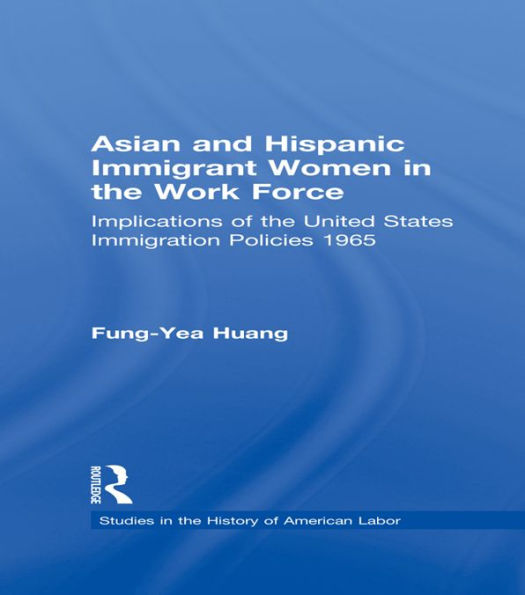Asian and Hispanic Immigrant Women in the Work Force: Implications of the United States Immigration Policies since 1965
Data from the Current Population Survey were used in a unique analysis of migration and economic adaptation in a nationally representative sample of Asian and Hispanic immigrant women. The study describes migration patterns and compares the labor market adaptation experiences of women who migrated with their families and women who migrated independently. The book also examines the systematic differences in migration patterns by country of origin and how these differences relate to labor market performance The findings highlight the considerable impact of immigration policy on the economic adaptation of immigration women. Wives who migrated before their husbands were more likely to be in the labor force, especially when compared to wives migrating after their husbands. In contrast, wives who migrated with their husbands were not likely to participate in the labor force. Interestingly, Asian immigrant wives, were more likely to migrate while married than were Hispanic immigrant wives. Asian wives who migrated after their husbands, earned substantially lower wages than their respective ethnic counterparts (Ph.D. Dissertation, Cornell University, 1995; revised with new preface and index)
1133804070
Asian and Hispanic Immigrant Women in the Work Force: Implications of the United States Immigration Policies since 1965
Data from the Current Population Survey were used in a unique analysis of migration and economic adaptation in a nationally representative sample of Asian and Hispanic immigrant women. The study describes migration patterns and compares the labor market adaptation experiences of women who migrated with their families and women who migrated independently. The book also examines the systematic differences in migration patterns by country of origin and how these differences relate to labor market performance The findings highlight the considerable impact of immigration policy on the economic adaptation of immigration women. Wives who migrated before their husbands were more likely to be in the labor force, especially when compared to wives migrating after their husbands. In contrast, wives who migrated with their husbands were not likely to participate in the labor force. Interestingly, Asian immigrant wives, were more likely to migrate while married than were Hispanic immigrant wives. Asian wives who migrated after their husbands, earned substantially lower wages than their respective ethnic counterparts (Ph.D. Dissertation, Cornell University, 1995; revised with new preface and index)
41.49
In Stock
5
1

Asian and Hispanic Immigrant Women in the Work Force: Implications of the United States Immigration Policies since 1965
321
Asian and Hispanic Immigrant Women in the Work Force: Implications of the United States Immigration Policies since 1965
321
41.49
In Stock

Product Details
| ISBN-13: | 9781135641139 |
|---|---|
| Publisher: | Taylor & Francis |
| Publication date: | 03/05/2014 |
| Series: | Garland Studies in the History of American Labor |
| Sold by: | Barnes & Noble |
| Format: | eBook |
| Pages: | 321 |
| File size: | 6 MB |
About the Author
From the B&N Reads Blog
